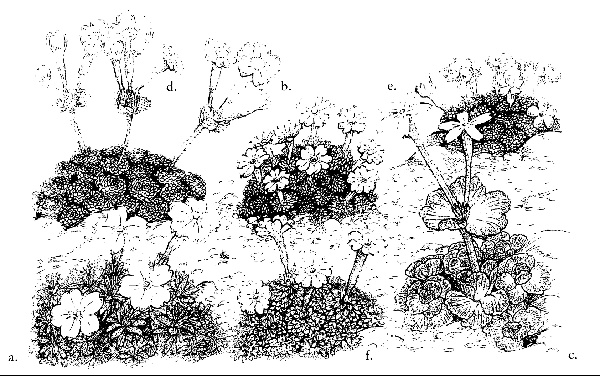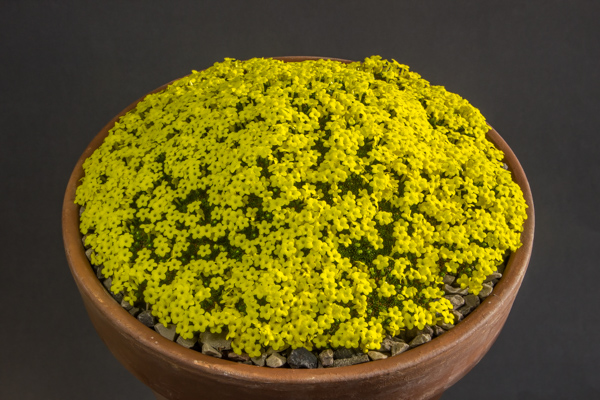Authors: Bunge
Forming large cushions up to 36cm diameter in cultivation, with or without whitish or yellowish farina; stems forming close columns covered in the old dead leaf remains, terminating in green leaf rosettes crammed closely together. Leaves variable, oblong to elliptic or spathulate, 2-4mm long, untoothed, covered in tiny glands, but no hairs, the veins distinctly raised, especially beneath. Flowers solitary and sessile; corolla yellow, very occasionally with an orange spot at the base of each lobe, the tube 9-14mm long, the limb 5-6mm diameter, with oval or elliptical, usually un-notched lobes. Some of the efarinose clones have acid yellow flowers. Widely distributed from Turkmenistan and north-eastern Iran, throughout the mountains of Afghanistan to the border of Pakistan, on shaded or semi-shaded limestone or dolomitic cliffs and outcrops, 1000-3200m. A number of clones of this species are in cultivation and seed is regularly set. Cuttings are also relatively easy to root. The species is considered one of the easiest to cultivate and most forms are very floriferous. Although botrytis can be a problem as with any species, this is rarely fatal and even fairly large patches can be removed and the cushion will usually knit back together. As a result, larger cushions can often become rather uneven, but possibly naturalistic, in shape. Wild clones regularly seen in cultivation are PF8964, H1164, GW/H780, T4Z1133 although there have been numerous other collections and alpine house raised seedlings are numerous. The Turkmen form collected on Kopet Dagh by Hermann Fuchs in 1999 is a distinctive pale yellow colour, open pollenated seedlings of which retain that colour.
Joint Rock: Joint Rock Awards, Early Spring AGS Show, 26/2/11

a, D. aretioides; b, D. curviflora; c, D. involucrata; d, D. microphylla; e, D. tapetodes; f, D. viscidula;


Sign up for our newsletter to receive our monthly update direct to your inbox. Featuring our latest articles and news.
Built by Atomic Smash

